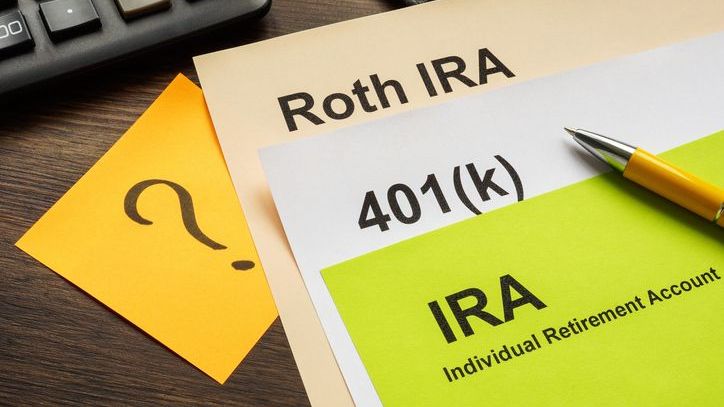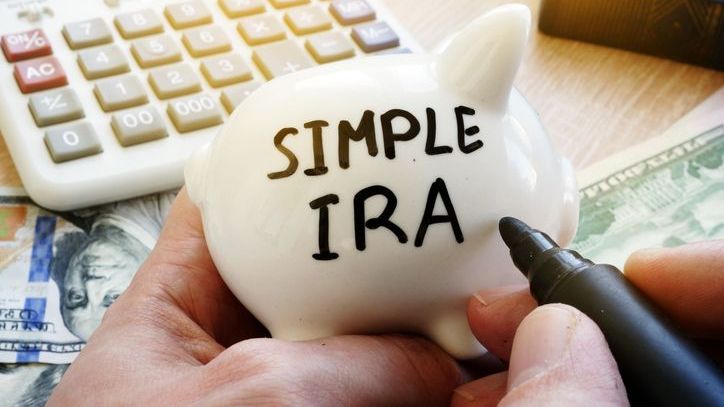There are many retirement plans available to help you save for your golden years. 401(k)s, IRAs and Roth IRAs offer unique benefits and tax advantages tailored to different financial goals and employment situations. Choosing the right plan can affect your savings strategy, tax liabilities and overall retirement readiness, which is why carefully comparing the available options is so valuable.
A financial advisor can help you plan and save for retirement. Connect with a fiduciary financial advisor today.
Defined Contribution Plans vs. Defined Benefit Plans
Retirement plans can generally be broken down into two broad categories: defined contribution plans and defined benefit plans.
Defined contribution plans, such as 401(k)s, allow employees to contribute a portion of their salary into individual accounts. These contributions may be matched by the employer up to a certain limit. The final retirement benefit depends on the investment performance of the contributions, making the plan’s outcome variable. Employees bear the investment risk, and their retirement savings grow based on contributions and investment returns.
In contrast, defined benefit plans provide a fixed, predetermined monthly benefit at retirement, calculated using a formula that typically considers factors such as salary history and length of employment. Employers are responsible for ensuring that there are enough funds to pay future benefits, taking on the investment risk. This type of plan, which includes traditional pensions, guarantees a specific payout, giving employees a predictable income stream during retirement.
10 Types of Retirement Plans

Retirement plans can either be offered through an employer or opened individually. Each plan offers unique tax advantages, contribution limits and withdrawal rules, catering to different employment situations and financial goals.
401(k)
A 401(k) is an employer-sponsored retirement plan that allows employees to save a portion of their paycheck before taxes are taken out. Employers often match a portion of employee contributions, enhancing the growth potential of the retirement savings. Withdrawals in retirement are taxed as ordinary income, but early withdrawals before age 59 ½ may incur penalties and taxes.
- 2024 contribution limit: $23,000 (plus $7,500 for people 50 and older)
Traditional IRA
A traditional individual retirement account (IRA) allows individuals to make pre-tax contributions. The funds grow tax-deferred until withdrawals are made during retirement, at which point they are taxed as ordinary income. There are annual contribution limits, and early withdrawals, like 401(k)s, early withdrawals may be subject to penalties.
- 2024 contribution limit: $7,000 (plus $1,000 for people 50 and older)
Roth IRA
Roth IRAs are funded with post-tax dollars, meaning contributions do not lower your taxable income for the year in which they are made. However, qualified withdrawals in retirement are tax-free, including both contributions and earnings. This plan is advantageous for individuals who expect to be in a higher tax bracket in retirement. There are also income limits that determine eligibility for contributing to a Roth IRA.
- 2024 contribution limit: $7,000 (plus $1,000 for people 50 and older)
Roth 401(k)
Similar to a traditional 401(k), a Roth 401(k) is also employer-sponsored but allows contributions with after-tax dollars. This means qualified withdrawals during retirement are tax-free. Employees can benefit from both employer contributions and the tax-free withdrawal benefits, making it a hybrid of a 401(k) and a Roth IRA.
- 2024 contribution limit: $23,000 (plus $7,500 for people 50 and older)
403(b) Plan
403(b) plans are similar to 401(k) plans but are designed for employees of public schools and certain non-profit organizations. These plans allow for pre-tax contributions, tax-deferred growth and are subject to the same withdrawal rules and penalties as 401(k) plans. Employer contributions can also be part of 403(b) plans.
- 2024 contribution limit: $23,000 (plus $7,500 for people 50 and older)
457 Plans
457 plans are non-qualified, tax-advantaged deferred compensation retirement plans available for government and certain non-government employees. Contributions are made pre-tax, and earnings grow tax-deferred. Unlike 401(k) and 403(b) plans, 457 plans do not impose a penalty for withdrawals if you retire before age 59 ½.
- 2024 contribution limit: $23,000 (plus $7,500 for people 50 and older)
Simplified Employee Pension (SEP) IRA
Simplified employee pension (SEP) IRAs are designed for self-employed individuals and small business owners. Employers can contribute to their employees’ SEP IRAs, with higher contribution limits compared to traditional IRAs. Contributions are tax-deductible, and funds grow tax-deferred until retirement withdrawals, which are taxed as ordinary income.
- 2024 contribution limit: 25% of employee’s compensation or up to $69,000 (whichever is lesser)
SIMPLE IRA

The savings incentive match plan for employees (SIMPLE) IRA is another option for small businesses and self-employed individuals. Employees can contribute a portion of their salary, and employers must either match contributions or make non-elective contributions. Like other IRAs, contributions grow tax-deferred, and withdrawals in retirement are taxed.
- 2024 contribution limit: $16,000 in employee contributions ($19,500 for people 50 and older), plus up to 3% employer match or 2% nonelective employer contribution
Solo 401(k)
Solo 401(k) plans are designed for self-employed individuals with no employees other than a spouse. These plans allow for high contribution limits, combining both employee and employer contributions. Contributions grow tax-deferred, and the plan offers the same tax advantages and penalties for early withdrawals as traditional 401(k) plans.
- 2024 contribution limits: up to $23,000 ($30,500 for participants 50 and older) in elective deferrals, plus up to 25% of compensation in nonelective employer contributions; total contributions cannot exceed $69,000 (not including catch-up contributions)
Thrift Savings Plans (TSP)
Thrift savings plans (TSPs) are retirement plans for federal employees and members of the uniformed services. They function similarly to 401(k) plans, offering both traditional and Roth options. TSPs have low administrative fees and provide a range of investment funds. Participants can contribute a portion of their salary, and the government may also make matching contributions.
- 2024 contribution limit: $23,000 ($30,500 for participants who are 50 or older)
Bottom Line
Knowing the specific benefits and tax advantages for different retirement plans can help you align your savings strategy with your retirement goals. Careful comparison and consideration of each plan’s features, contribution limits and tax implications can help you make informed decisions, optimizing your retirement readiness and financial well-being.
Retirement Planning Tips
- If you have savings in a tax-deferred account like a traditional IRA or 401(k), it’s important that you plan for required minimum distributions (RMDs). These are the withdrawals the IRS requires you to take, starting at age 73 (75 for people who will turn 74 after Dec. 31, 2032). SmartAsset’s RMD calculator can help you estimate how much your first mandatory withdrawal will be.
- If you need help planning for your golden years, a financial advisor can help guide you through the retirement planning process. Finding a financial advisor doesn’t have to be hard. SmartAsset’s free tool matches you with up to three vetted financial advisors who serve your area, and you can have a free introductory call with your advisor matches to decide which one you feel is right for you. If you’re ready to find an advisor who can help you achieve your financial goals, get started now.
Photo credit: ©iStock.com/Wasana Kunpol, ©iStock.com/designer491, ©iStock.com/designer491
